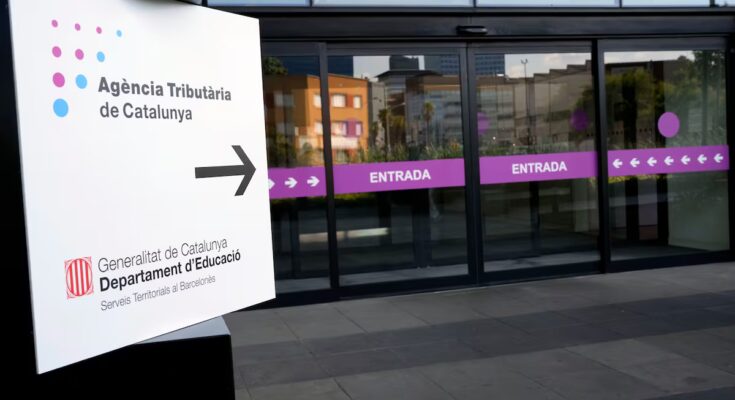The Law of Second Chance has become a very useful emergency button for those living in extreme economic situations. In 2024, around 50,000 citizens and self-employed workers cornered by the red numbers activated this life-saving mechanism. The law, approved in 2015, has proven to be an effective tool for making a clean slate for debtors – mind you, those in good faith and who do not have criminal records or serious administrative sanctions – if they thus maintain their home or a minimum income to live on. In the last year, the news is that some judges have strengthened this system by including debts contracted with the Treasury and Social Security, missed payments that the law protects.
The point is that, according to bankruptcy law, only the first 10,000 euros of debt with the Treasury and the first 10,000 euros with Social Security are payable; and the remaining amount must be paid. With this ceiling the law tries not to create a hole in the public coffers. But, in practice, this limit prevents taxpayers from rebuilding their lives. In November 2024, the controversial cap earned Spain a wake-up call from the Court of Justice of the European Union (CJEU), which rejected that public debts enjoyed this privilege without sufficient justification.
In recent months, and following the community ruling, the Spanish judges have taken note of this. A month ago, a man won a case to get rid of a missed payment of 220,819 euros of public debt. The Commercial Court number 1 of Barcelona does not apply the limits of the Second Chance Law and, in agreement with the CJEU, evaluates the vulnerability of the debtor: he was a 54-year-old man, with two dependent minor daughters and with a monthly income of 979 euros. Pau Chavarria, of the CCB Abogados y Economistas, is the lawyer who won the case, the first of this magnitude in Catalonia, he assures. “Many private individuals and self-employed workers with defaults exceeding 20,000 euros will be able to obtain total forgiveness of their debts, rebuilding their lives in a dignified way and without being perpetually foreclosed, insolvent or in the underground economy,” he underlines.
Similar stories have emerged in the legal press over the past year. For example, in June a self-employed worker from Madrid obtained judicial forgiveness of a public debt of over 150,000 euros – 116,000 euros from Social Security, 40,000 from the Treasury and more than 1,000 from the City of Madrid -, arguing that the legal limit of 20,000 euros had no reason to exist. In Córdoba, an entrepreneur hit by the real estate crisis obtained a pardon of 230,000 euros.
Stories of citizens who have bent the knee to the Treasury or Social Security easily gain traction in the press. It’s no surprise that the idea that anyone can start from scratch is powerful and enticing to anyone who is drowning in financial hardship. This wheel of hope is fueled by the advertising artillery of law firms specializing in second chance law, which have flourished by the dozen in recent years. And in this context there is a danger: conveying the idea that asking for the forgiveness of debts, even public ones, is child’s play.
Beware of the siren songs
The reality is more complex. Some experts consulted by EL PAÍS are more cautious: it is neither a guaranteed victory nor all sunshine and rainbows. For starters, because the victories of those in debt emerge in dribs and drabs. And in any case, favorable precedents alternate with others where justice reigns in favor of the Public Administration.
“The CJEU recognized that states can protect their tax systems and limit the exemption of public credit as long as they do so in a proportionate way,” explains Miguel Ángel Marchena, managing partner of Adara Legal, a firm specializing in second chances. The expert recalls that there are provincial courts that have opted for a “very literal reading of the new law”, that is, they are inclined to limit the amnesty to 20,000 euros to the detriment of the debtor. “The path of these cases is much more limited than the sentences cited in recent months suggest,” explains the lawyer.
Alejandro Sanchis, of bankruptcy law firm AMG Legal, acknowledges that there will be more judicial decisions exempting public debt beyond regulatory limits, following the CJEU ruling. But Sanchis agrees with Marchena that the road for debtors, even with these wicks, is tortuous. “There are disparate criteria not only between the commercial courts of different provinces, but also between the courts of the same location,” notes the lawyer.
The complexity of these cases is not limited to the debate over whether or not public credit should be exempted; There are formal edges that confuse the litigation in the midst of a failing regulatory framework, reformed in 2022, which is still neophyte. “For example, although bankruptcy law does not require communicating the discharge request to creditors via email, in places like Barcelona or Zaragoza the courts impose this additional communication as a practical requirement,” explains Sanchis. It is a seemingly insignificant detail, but such a thing can ruin the expectations of the failed citizen. The second chance game does not have simple instructions.
Lack of agreement
The judges disagree on the dilemma of public debt forgiveness, which anticipates a more than likely intervention by the Supreme Court. We find an example in Alicante. In May 2025, Commercial Court Number 1 devised a new formula in response to the request for help from a bankrupt citizen who owed more than 22,377 euros to the public coffers. The judge forgave the first 5 thousand euros and half of the rest, regardless of who the creditor public body was. However, in a recent ruling in September, the Provincial Court overturned this solution.



